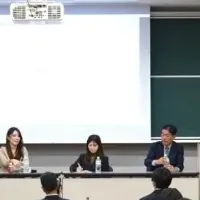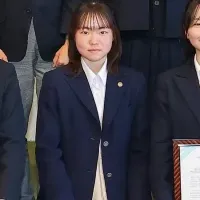
Pusan National University's Innovative Method Accelerates Composite Material Analysis and Modeling
Composite materials, which blend two or more distinct materials like fibers and matrices, are crucial in various industries. These materials must be accurately assessed to predict their performance in real-world conditions. Traditional methods for estimating composite material properties, such as thermal conductivity and elasticity, can be both time-consuming and computationally intensive. Researchers at Pusan National University have taken a significant step forward with the introduction of the Reduced Basis Homogenization Method (RBHM), which aims to revolutionize how these materials are analyzed.
Led by Professor Kyunghoon Lee, the RBHM enhances the existing Finite Element Method (FEM) used in numerical homogenization—an approach that solves partial differential equations (PDEs) to provide macroscopic property predictions based on microscopic behavior. By shifting to a reduced basis space, RBHM accelerates the numerical homogenization process, allowing for rapid adjustments when exploring various fiber and matrix combinations. This flexibility is essential for engineers, enabling them to efficiently design and tweak composite materials to meet specific needs.
The implications of RBHM are profound, delivering computational speeds that can be up to 1,030 times faster for thermal properties and 670 times quicker for elasticity. Despite these speed enhancements, accuracy remains paramount; RBHM yields results that align closely with traditional FEM predictions, exhibiting errors of less than 5% in thermal conductivity and under 3% in Young's modulus compared to experimental data.
Professor Lee emphasizes the importance of these advancements: 'With RBHM, we can rapidly generate solutions for microscale PDEs. This capability allows us to quickly evaluate the homogenized properties of periodic composite materials by experimenting with various material combinations.' Such efficiency is vital for industries requiring extensive virtual testing and development of composite materials.
Furthermore, the method enhances scalability for large-scale industrial applications by potentially reducing overall computation time by up to 70%. This efficiency not only facilitates rapid testing but also opens avenues for developing even more complex composite materials that can handle nonlinear elastic behaviors and thermoelastic coupling in future studies. As the research team looks ahead, expanding RBHM's capabilities promises to further integrate this method into cutting-edge material sciences, showcasing the dynamic advancements coming from Pusan National University.
The details of this study have been published in the International Journal of Mechanical Sciences on November 15, 2024, providing an in-depth examination of the method's effectiveness and its potential applications in the field of composite material science. For more information on this groundbreaking research, you can refer to the original paper titled 'Reduced basis homogenization of thermal and elastic properties for periodic composite materials' (DOI: 10.1016/j.ijmecsci.2024.109801).
Led by Professor Kyunghoon Lee, the RBHM enhances the existing Finite Element Method (FEM) used in numerical homogenization—an approach that solves partial differential equations (PDEs) to provide macroscopic property predictions based on microscopic behavior. By shifting to a reduced basis space, RBHM accelerates the numerical homogenization process, allowing for rapid adjustments when exploring various fiber and matrix combinations. This flexibility is essential for engineers, enabling them to efficiently design and tweak composite materials to meet specific needs.
The implications of RBHM are profound, delivering computational speeds that can be up to 1,030 times faster for thermal properties and 670 times quicker for elasticity. Despite these speed enhancements, accuracy remains paramount; RBHM yields results that align closely with traditional FEM predictions, exhibiting errors of less than 5% in thermal conductivity and under 3% in Young's modulus compared to experimental data.
Professor Lee emphasizes the importance of these advancements: 'With RBHM, we can rapidly generate solutions for microscale PDEs. This capability allows us to quickly evaluate the homogenized properties of periodic composite materials by experimenting with various material combinations.' Such efficiency is vital for industries requiring extensive virtual testing and development of composite materials.
Furthermore, the method enhances scalability for large-scale industrial applications by potentially reducing overall computation time by up to 70%. This efficiency not only facilitates rapid testing but also opens avenues for developing even more complex composite materials that can handle nonlinear elastic behaviors and thermoelastic coupling in future studies. As the research team looks ahead, expanding RBHM's capabilities promises to further integrate this method into cutting-edge material sciences, showcasing the dynamic advancements coming from Pusan National University.
The details of this study have been published in the International Journal of Mechanical Sciences on November 15, 2024, providing an in-depth examination of the method's effectiveness and its potential applications in the field of composite material science. For more information on this groundbreaking research, you can refer to the original paper titled 'Reduced basis homogenization of thermal and elastic properties for periodic composite materials' (DOI: 10.1016/j.ijmecsci.2024.109801).
Topics Other)










【About Using Articles】
You can freely use the title and article content by linking to the page where the article is posted.
※ Images cannot be used.
【About Links】
Links are free to use.